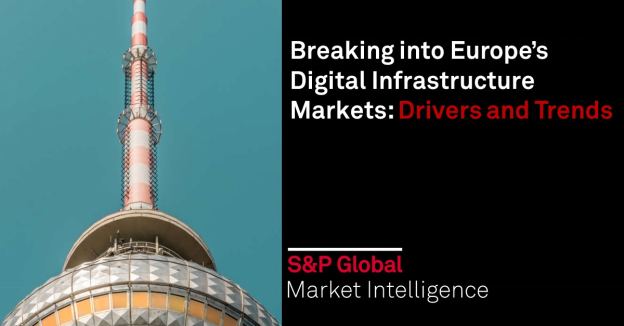
Second blog in a three-part series – ESG implications
The digital world has become critical to daily life, as the COVID-19 pandemic proved. Driving a digital transition requires investment in infrastructure – data centers, fiber networks and wireless communication towers that can support data growth and connectivity needs by improving network density, speeds and reliability.
Data centers serve a variety of functions and are essential for housing both edge and cloud workloads. Wireless communication towers are the last mile for all mobile devices and serve as the main connection hub for 5G, fixed wireless and edge computing.
This second blog in our three-part series, based on our recent webinar, highlights environmental considerations and the role governments and global corporations play in achieving our environmental goals.
- Being ‘green’ is becoming increasingly important for investors, but also helps optimize assets. This optimization goes hand-in-hand with M&A activity, especially around digital infrastructure and passive elements.
- There are optimization opportunities in relation to fiber and ESG. A survey of 101 telecoms and 42 cable professionals across the globe last year showed that the environmental impact was a driver in the decision to upgrade to fiber.
- Technology alone is not enough to achieve environmental goals, and both companies and governments need to play a critical role. For example, Telia, a Nordic company, is using its influence with suppliers to help promote low-carbon operations. At year-end, suppliers representing 16% of the company's total supply chain emissions had set science-based targets.
- There is also momentum for sustainable technology beyond individual actions. The European Green Digital Coalition founded in March 2021 is one example, and its plans include continued improvement in networks and data centers and rolling out green digital technologies.
- Fiber is efficient. Gigabit passive optical networks (GPON), showed an 8.9% improvement in total energy consumption when compared with VDSL vectoring, and a 36.7% improvement when compared with cable. GPON are also passive networks with essentially no optical elements between the central office and the end customer.
- Proximus, a Belgium telco, has highlighted the environmental benefits of fiber. According to the firm, data transmission over fiber uses up to 12x less energy than copper. In addition, the production of 2 kilograms of copper wire results in the emission of 1,000 kilograms of CO2, compared with fiber's meager 0.06 kilograms. The same is true for 5G, which has shown to be up to 90% more efficient than 4G in terms of energy consumption per unit of traffic.
- On fixed networks, the clearest short-term benefit for operators in terms of both ESG and revenue will be a retirement of copper networks, with cable’s eventual shift to full fiber. Timelines for copper network shutdowns are still not universally transparent in Europe, given that much of that relies on the transition to fiber and the shift of third-party network carriers to the new networks.
- A massive growth in data consumption is expected. This will increase energy use with the need to support even more devices and new services like IoT.
We deliver an integrated suite of ESG solutions that provide access to a comprehensive view of data and analytics on ESG issues for more informed decision making. To learn more, click here.
Listen on demand to the full webinar titled Breaking into Europe’s Digital Infrastructure Markets: Drivers & Trends.
Read the first blog HERE.
